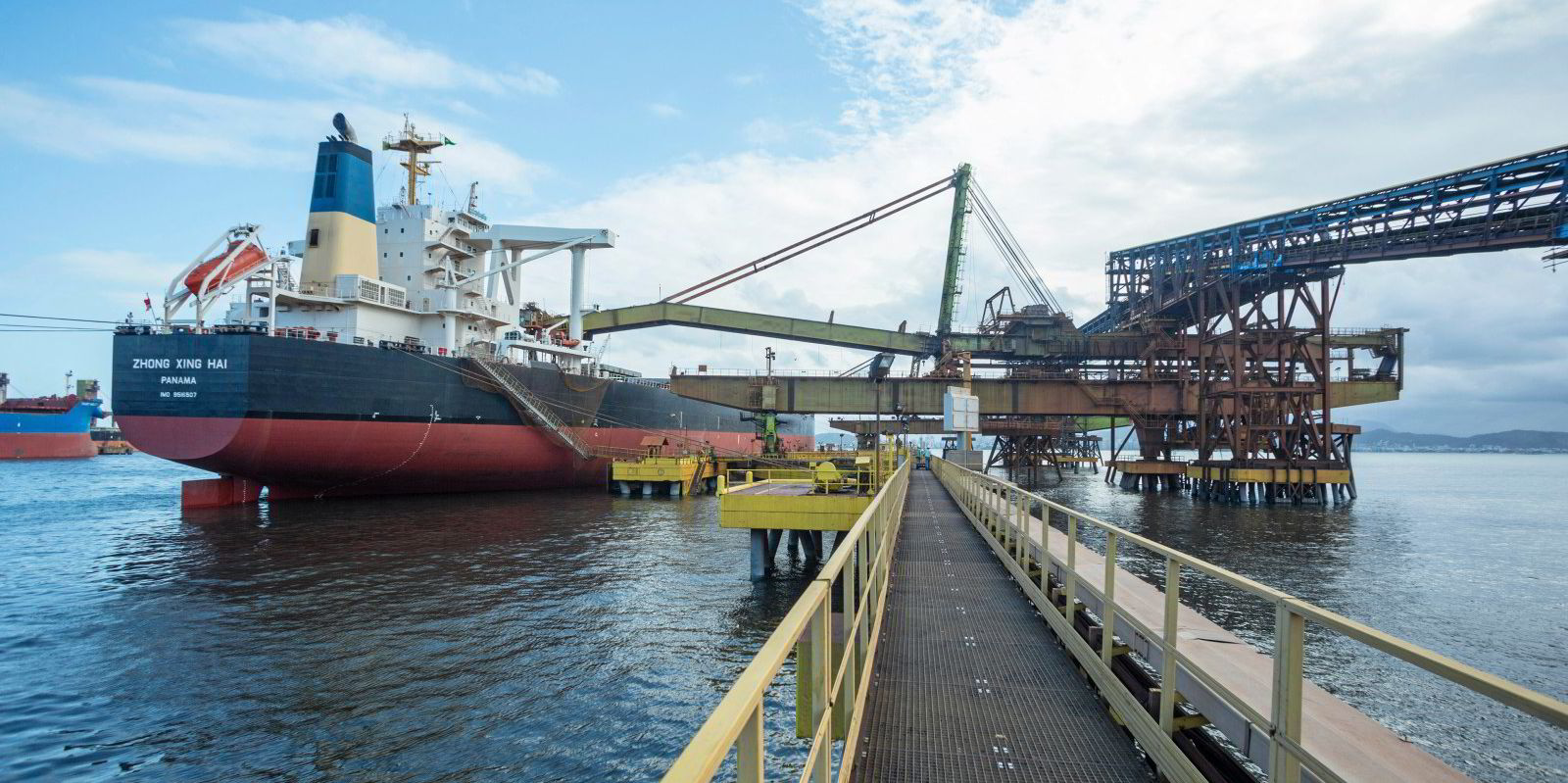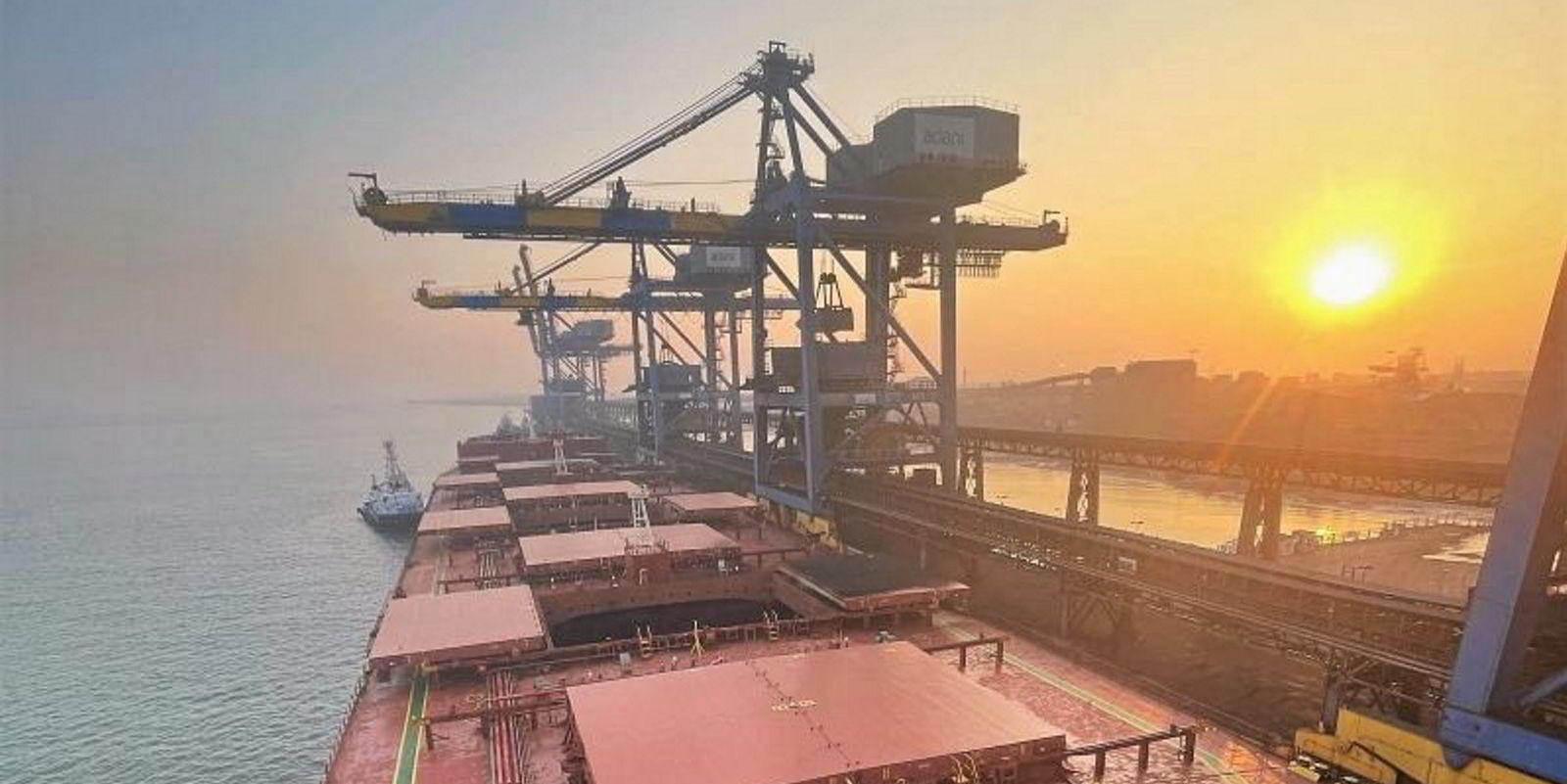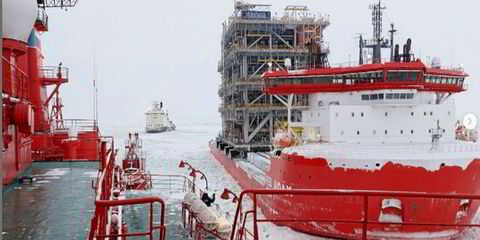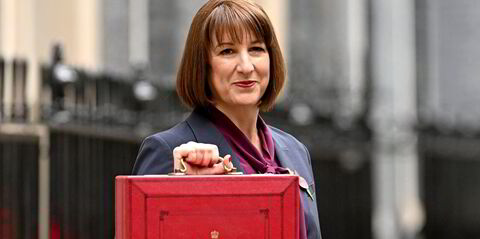Capsize bulker rates surged on Friday to close the week above $35,000 per day for the first time in 12 weeks, and futures rocketed to imply that those levels could stick around next month as well.
The Baltic Exchange’s measure of average capesize spot rates jumped 6.7% in one session to hit $35,200 per day.
This is up a fraction of a per cent from the previous Friday after rates took a midweek plunge and then regained lost ground.
Rates have not been this high since 14 December.
Stamatis Tsantanis, the chief executive of capesize bulker owner Seanergy Maritime, told TradeWinds that there is “a tremendous amount of cargo volume” being fixed each day, including iron ore, coal and bauxite.
“In addition, the effect of the Red Sea diversion is only now starting to kick in,” he said, referring to rerouting of ships in response to Houthi attacks from Yemen.
Forward freight agreements gained even more ground than the spot market.
April contracts based on the same basket of average rates surged 7.4% on Friday to just under $36,000 per day, according to data from the Baltic Exchange.
That represents a 4% gain from a week earlier, when the FFA market posted even stronger improvements.
The surges in the spot and futures are showing counterseasonal strength, with today’s average spot rate more than double what it was this time last year.
“And we’re supposed to be in the soft season,” shipowner 2020 Bulkers said on X.
But Friday’s games came after seesawing in rates.
“The week commenced robustly in the Pacific, with all three miners bustling with activity,” Baltic Exchange analysts wrote in their weekly report.
“However, as the week progressed there was a notable softening in market sentiment.”
The drop in average rates, which plummeted to just under $31,300 per day on Wednesday, was a result of slower activity in both the Pacific and the Atlantic.
That changed as futures movement buoyed sentiment.
“The market saw a turnaround towards the end of the week, influenced by positive movements in the FFA market and a pickup in activity in both basins.
“In the Pacific, brokers have also noticed an increase in operator-controlled cargoes,” the Baltic Exchange said.
“Activity in the Atlantic notably picked up, particularly from South Brazil and West Africa to the Far East.”
By Friday, there were reports of an iron ore fixture for Brazil-to-China voyages at $31.25 per tonne, up from $30.50 on Thursday and $27.50 a week earlier, according to Baltic Exchange data.
In Western Australia, mining major Fortescue Metals Group fixed a vessel to carry 160,000 tonnes to China at $14.40 per tonne, while rival Rio Tinto paid $14.10 per tonne for a 170,000-tonne stem on the same route.
That’s up from $13.55 per tonne just a day earlier, Baltic Exchange data shows.
Looking ahead, Tsantanis said he expects a tonnage supply crunch in the sector to get even worse.
“I don’t see the volumes reducing, neither the Red Sea situation normalising any time soon,” he said. “Therefore, freight rates could continue rising.”





